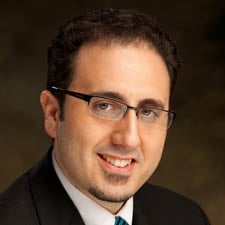As a resident at Bronx Lebanon Hospital in New York, Kurt Bravata, MD, frequently treated drug and alcohol-addicted patients and thought he understood the harsh realities these patients faced. Then he moved to a small town in rural Missouri.
“The area code for Bolivar, Missouri, where I practice is 417, which is also the street name for meth,” Dr. Bravata said. “The region I practice in is the capital for meth production in the state. I was not entirely prepared for the extent of the substance-abuse problem I now face.”
The patient population he encountered in middle America suffered from the same problems as his inner-city patients, but lacked the resources to deal with it, even when it came to the basics.
“Missouri is one of the few states that doesn’t have a PDMP [prescription-drug monitoring program], so when patients are coming to me asking for medications I have no way to check and see what they’ve already been prescribed.”
There was one pain management physician in the area that Dr. Bravata tried to refer patients to, but he quickly discovered that this physician was not interested in managing opioid abuse disorders or even prescribing guidance. Other physicians he approached were cutting back on their prescribing due to recently passed prescribing regulations from the Food and Drug Administration, and so the closest addiction provider he could find to refer patients to was 45 minutes away.
Building out the infrastructure
“I kept being told by other doctors that they didn’t want the hassle of dealing with opioid-abuse patients in their practice, but I wanted to find people help,” he said. “I probably took on more pain management patients than I should have because I thought someone should help them. If you’re a doctor and you see an emergency, you have to run towards it.”
Running towards the emergency for Dr. Bravata meant building out the infrastructure and programs that his community was missing. “After months of this struggle, I realized that I needed a program that would allow me to draw these patients out of the shadows and into treatment and I resolved to develop a comprehensive, integrated program.”
He began pushing for his local hospital to adopt an addiction-recovery program as a stand-alone service. Compiling population data and the success of addiction programs and matching that with info on the potential long-term effects of crime reduction and the financial savings of treating the problem rather than ignoring it, he presented to the local hospital CEO and clinic directors to see if they would help tackle the problem.
In the meantime, Dr. Bravata continued to take on pain management patients in his own practice and got his suboxone waiver. He self-educated, taking CME credits, and became a member of the American Society of Addiction Medicine (ASAM). Eventually the hospital agreed to create a clinic which now employs two psychologists, three licensed clinical social workers and a nurse practitioner who is seeing patients three days a week.
“We are about to max out our prescribing limits for suboxone. We can increase to 100 per prescriber and I think we will—the need is there,” Dr. Bravata said. “The patients and referrals keep coming and we’ve not done any advertising.”
While establishing a clinic goes a long way to serving an underserved community, there is work that needs to be done everywhere to turn the tide against this epidemic.
“I think there is a need for a new specialty, and definitely a new model for screening and identifying patients who are high-risk pain patients and teaching doctors and medical students to differentiate between that and addiction,” Dr. Bravata said.
Efforts to curb prescribing can sometimes punish physicians for trying to help, he added.
“We have to find a way to treat patients and not come down on prescribers for trying to manage a complex problem.”
But perhaps the biggest problem is one of stigma.
“Addiction isn’t a moral failing. A patient escalating their pain medication use isn’t a moral failing. They have a physiological need,” Dr. Bravata said. “Complex patients need complex solutions and we aren’t doing a great job. We can do better. We have to do better.”
Learn more about what the AMA is doing to end the opioid epidemic.




